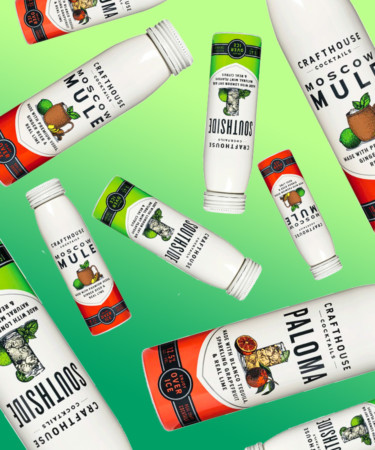There’s no denying the canned cocktail category’s recent explosion in popularity. Combined with hard seltzer and other ready-to-drink offerings, the category grew 43 percent in 2020 across the globe and is expected to surpass $146 billion in sales by 2030 in the United States alone.
The authenticity of brands like Crafthouse Cocktails — using natural ingredients with recipes crafted by skilled and reputable bartenders — has become a big draw for consumers in the know. Instead of spending unnecessary dollars stocking a home bar to the max, canned cocktails offer a convenient, grab-and-sip alternative.
Let’s break it down with nine things you should know about Crafthouse Cocktails.
Its Co-founder Is a World-Champion Mixologist
If you’re going to try a cocktail in a can, wouldn’t you want it to be made by a world-class bartender? In addition to co-founding the company, Charles Joly created, tweaked, and honed every Crafthouse recipe. He is the only American to ever win World Class by Diageo, one of the industry’s most prestigious bartending competitions. He has also received four James Beard Award nominations and is widely considered one of the most influential bartenders in the country.
Crafthouse Isn’t the Founders’ First Venture Together
After knowing each other through the Chicago hospitality industry since 1999, Matt Lindner and Charles Joly joined forces in 2007 to open the Drawing Room. Located in the Gold Coast neighborhood, the establishment focuses on classic and craft cocktails and is the place where the idea to start Crafthouse was born.
Cocktail Coalition
Crafthouse Cocktails doesn’t work alone. Instead of creating its own spirits to use in the recipes, Crafthouse aligns itself with several quality spirit brands to ensure that its canned cocktails are as good as any drinks offered at top bars. The relationships are proudly boasted on the company website, unlike some other canned cocktail brands that don’t disclose what spirits they use. Crafthouse’s Paloma uses La Cofradia Tequila, while its Pineapple Daiquiri includes Plantation Stiggins’ Fancy Pineapple Rum and 5 Years Barbados aged rum. Crafthouse also sources vodka from CH Distillery in Chicago for its Moscow Mule and whiskey from Traverse City in northern Michigan for its Gold Rush.
You Can Drink Crafthouse on the Go
Crafthouse Cocktails are available in nearly every state. However, the three-tier-system and convoluted shipping restrictions regarding spirits in certain states prevent a push to get into every store across the nation. Instead, Crafthouse wants to be available to its consumers who are on the road. It currently has partnerships with Marriott hotels, Amtrak trains, and Virgin Voyage cruise lines.
The Three Rs
Crafthouse uses sustainable packaging for all of its size offerings. Its 200-milliliter bottles are made from 100 percent recyclable aluminum. Its 750-milliliter glass bottles are not only recyclable but also reusable (so keep some on hand for water refills or future cocktail concoctions). The most recent addition to the Crafthouse portfolio, the 1.75-milliliter bag-in-box, is more affordable to make and produces a lower carbon footprint than glass alternatives.
Stumbling Blocks in Montreal
Lindner and Joly recently divulged that, early in their journey, they opened a facility outside Montreal. There, they were urged to take shortcuts to make their recipes faster, more easily, and for less money. This didn’t align with their vision of using authentic ingredients to create proper cocktails, so they moved on.
The Highs and Lows of ABV
Because each Crafthouse cocktail is made as it would be in a bar (only in larger batches), the end result is unique and with varying alcohol levels. This sets Crafthouse apart from other canned cocktail brands, many of which have baseline ABVs across all their products. The Rum Old Fashioned has the highest ABV, with 24.6 percent, while the Moscow Mule and Paloma have the lowest, with 10.1 percent ABV and 10.6 percent ABV, respectively.
Create With Crafthouse
Crafthouse urges its fans to shake up their own cocktails at home. At-home enthusiasts looking to up their mixology games can explore Crafthouse by Fortessa. Available through Fortessa and Pottery Barn, products include everything from glassware and muddlers to ice buckets and smoking cloches.
Adamantly Against Citric Acid
When creating the recipes, Joly was inundated with suggestions to use citric acid instead of real citrus. Not only is it cheaper, but it helps create a shelf-stable product that isn’t as volatile during shipping. But the quality level wasn’t there for Joly — there was no question that he could make it work using real citrus.
